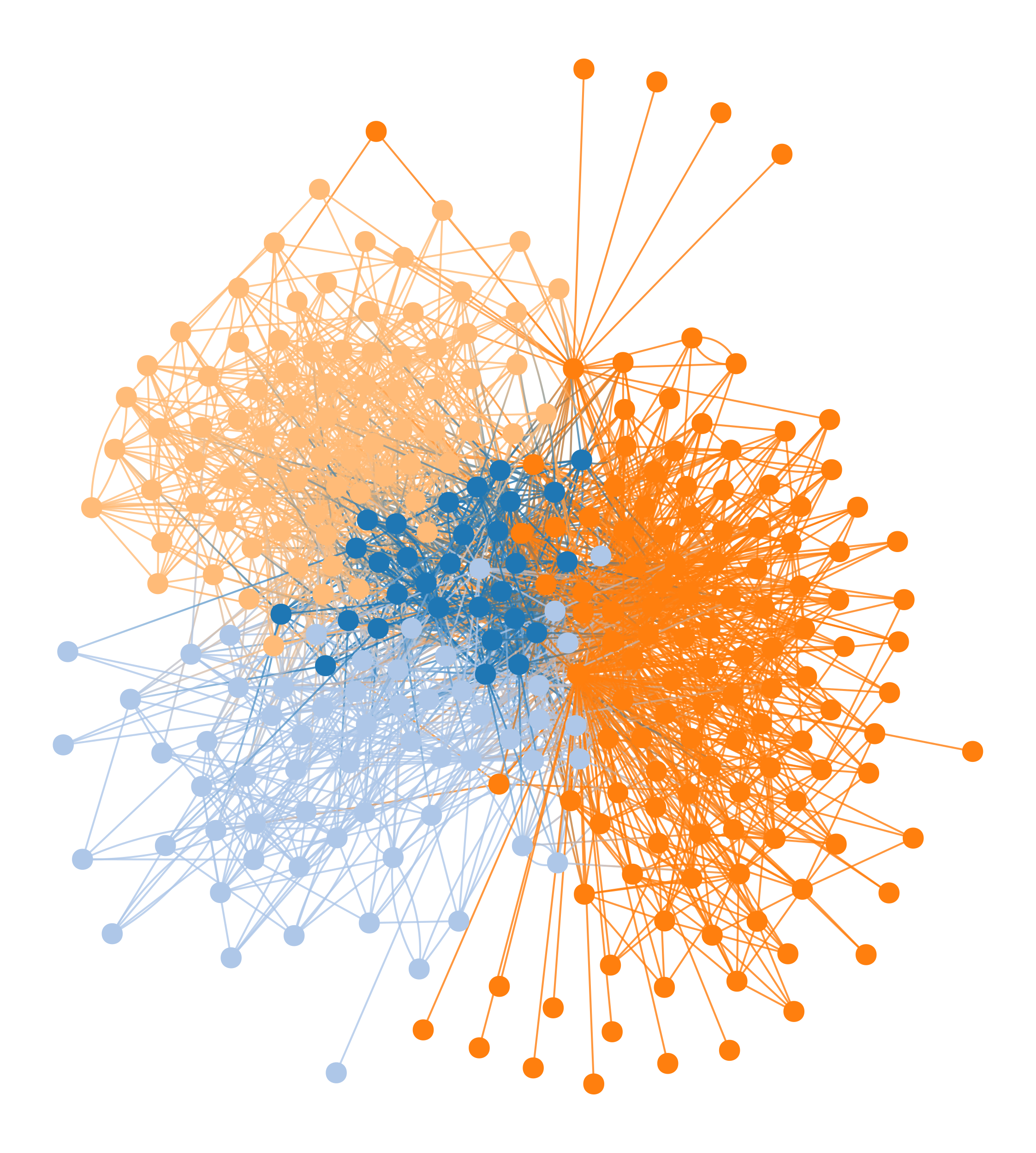minimize_blockmodel_dl#
- graph_tool.inference.minimize_blockmodel_dl(g, state=<class 'graph_tool.inference.blockmodel.BlockState'>, state_args={}, multilevel_mcmc_args={})[source]#
Fit the stochastic block model, by minimizing its description length using an agglomerative heuristic.
- Parameters:
- g
Graph The graph.
- stateSBM-like state class (optional, default:
BlockState) Type of model that will be used. Must be derived from
MultilevelMCMCState.- state_args
dict(optional, default:{}) Arguments to be passed to appropriate state constructor (e.g.
BlockState)- multilevel_mcmc_args
dict(optional, default:{}) Arguments to be passed to
multilevel_mcmc_sweep().
- g
- Returns:
- min_statetype given by parameter
state State with minimum description length.
- min_statetype given by parameter
Notes
This function is a convenience wrapper around
multilevel_mcmc_sweep().See [peixoto-efficient-2014] for details on the algorithm.
This algorithm has a complexity of \(O(V \ln^2 V)\), where \(V\) is the number of nodes in the network.
References
[peixoto-efficient-2014]Tiago P. Peixoto, “Efficient Monte Carlo and greedy heuristic for the inference of stochastic block models”, Phys. Rev. E 89, 012804 (2014), DOI: 10.1103/PhysRevE.89.012804 [sci-hub, @tor], arXiv: 1310.4378.
Examples
>>> g = gt.collection.data["polbooks"] >>> state = gt.minimize_blockmodel_dl(g) >>> state.draw(pos=g.vp["pos"], vertex_shape=state.get_blocks(), ... output="polbooks_blocks_mdl.svg") <...>
Block partition of a political books network, which minimizes the description length of the network according to the degree-corrected stochastic blockmodel.#
>>> g = gt.collection.data["polbooks"] >>> state = gt.minimize_blockmodel_dl(g, state=gt.OverlapBlockState) >>> state.draw(pos=g.vp["pos"], output="polbooks_overlap_blocks_mdl.svg") <...>
Overlapping partition of a political books network, which minimizes the description length of the network according to the overlapping degree-corrected stochastic blockmodel.#
>>> g = gt.collection.data["celegansneural"] >>> state = gt.minimize_blockmodel_dl(g, state=gt.PPBlockState) >>> state.draw(output="celegans_mdl_pp.pdf") <...>

Assortative partition of the C. elegans neural network, which minimizes the description length of the network according to the degree-corrected planted-partition blockmodel.#